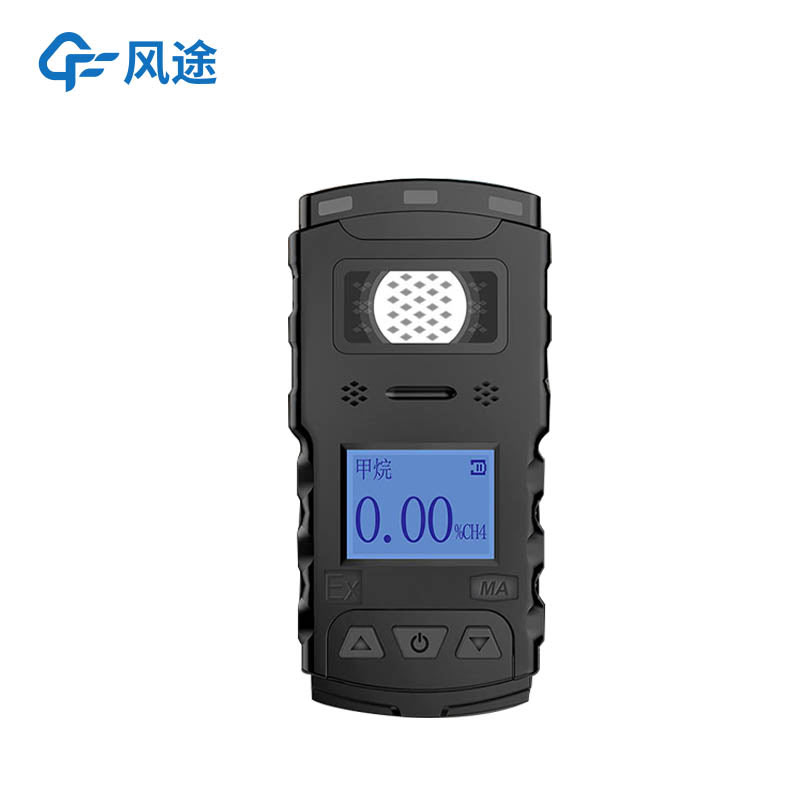Tianyi Sensor IOT Technology Co., Ltd
Sales Manager:Ms. Emily Wang
Cel,Whatsapp,Wechat:+86 15898932201
Email:info@fengtutec.com
Add:No. 155 Optoelectronic Industry Accelerator, Gaoxin District, Weifang, Shandong, China

Sales Manager:Ms. Emily Wang
Cel,Whatsapp,Wechat:+86 15898932201
Email:info@fengtutec.com
Add:No. 155 Optoelectronic Industry Accelerator, Gaoxin District, Weifang, Shandong, China
time:2025-03-18 13:38:09 source:Weather Station viewed:194 time
In underground coal mine operations, ensuring the safety of personnel and the smooth progress of work is of great significance. The industrial product, the Toxic gas detector, as a safety detection device, shoulders the important responsibility of safeguarding the safety of the mine. It can accurately measure the concentrations of carbon monoxide, oxygen, and nitrogen dioxide in the underground mine and issue timely alarms in case of abnormalities.
This detector uses the electrochemical principle to detect gases and has a wide measurement range: for carbon monoxide, it is (0 - 1000) x10⁻⁶; for oxygen, it is (0.0 - 25.0)%; and for nitrogen dioxide, it is (0.0 - 100) x10⁻⁶. The error control is excellent. For example, when CO is in the range of (0 - 20) x10⁻⁶, the error is only ±2x10⁻⁶; when it is in the range of (20 - 100) x10⁻⁶, the error is ±4x10⁻⁶. Strict error control also applies to oxygen and nitrogen dioxide.
Regarding its alarm function, the alarm values can be set according to requirements. The default alarm values are: for CO, 24x10⁻⁶ with an error of ±1x10⁻⁶; for O₂, 18.0% with an error of ±0.3% O₂; for NO₂, 5.0x10⁻⁶ with an error of ±1x10⁻⁶. When the gas concentration reaches the alarm point, the detector quickly alarms. The sound level is not less than 80 dB (1 meter away from the buzzer), and the light alarm intensity is not less than 20 meters (in a dark environment), ensuring that underground personnel can detect the danger in a timely manner.
In terms of response time, for CO, it is no more than 45 seconds, for O₂, no more than 35 seconds, and for NO₂, no more than 45 seconds, which can quickly reflect changes in gas concentration. The sensor has a lifespan of up to 1 year, and the battery can continuously work for more than 12 hours in a non - alarm state, ensuring the long - term stable operation of the device.
This detector is easy to operate and can be mastered after a short training. Its external dimensions are 127mmx67 mmx43mm, and it weighs only 500g, making it convenient to carry and facilitating flexible operations underground.
It is suitable for the following environmental conditions: temperature from 0℃ to +40℃; relative humidity ≤ 98% (+25℃); atmospheric pressure from 80 to 110 kPa; wind speed ≤ 8m/s; without obvious vibration and impact; and can be safely used in hazardous areas of explosive gas mixtures. Its explosion - proof form is intrinsically safe for mining, providing reliable safety protection for underground operations. With its advantages of simple operation, convenient portability, accuracy, and reliability, the Toxic gas detector has become one of the essential safety detection devices for underground coal mine operations, safeguarding the safe production of the mine.

Scenic areas pay particular attention to negative oxygen ions because the concentration of negative oxygen ions is an important indicator for measuring the quality of air and the ecological environment. Negative oxygen ions have the functions of purifying the air, improving cardiopulmonary function,...
As a crucial component of the power system, transmission lines undertake the important task of efficiently transmitting the electrical energy generated by power plants to various regions. By constructing a vast transmission network, electrical energy can travel over long distances to meet the electr...
Dust pollution refers to an open-air pollution phenomenon where ground dust is blown into the atmosphere by wind, human activities, or other factors. In ambient air, it is a component of total suspended particles (TSP) and poses a severe threat to atmospheric environmental quality. There are various...
Rain And Snow Gauge is a high-precision precipitation monitoring device utilizing weighing and Internet of Things (IoT) technology. It can monitor all types of precipitation, including rain and snow, and is specifically designed for meteorological observation and environmental monitoring....